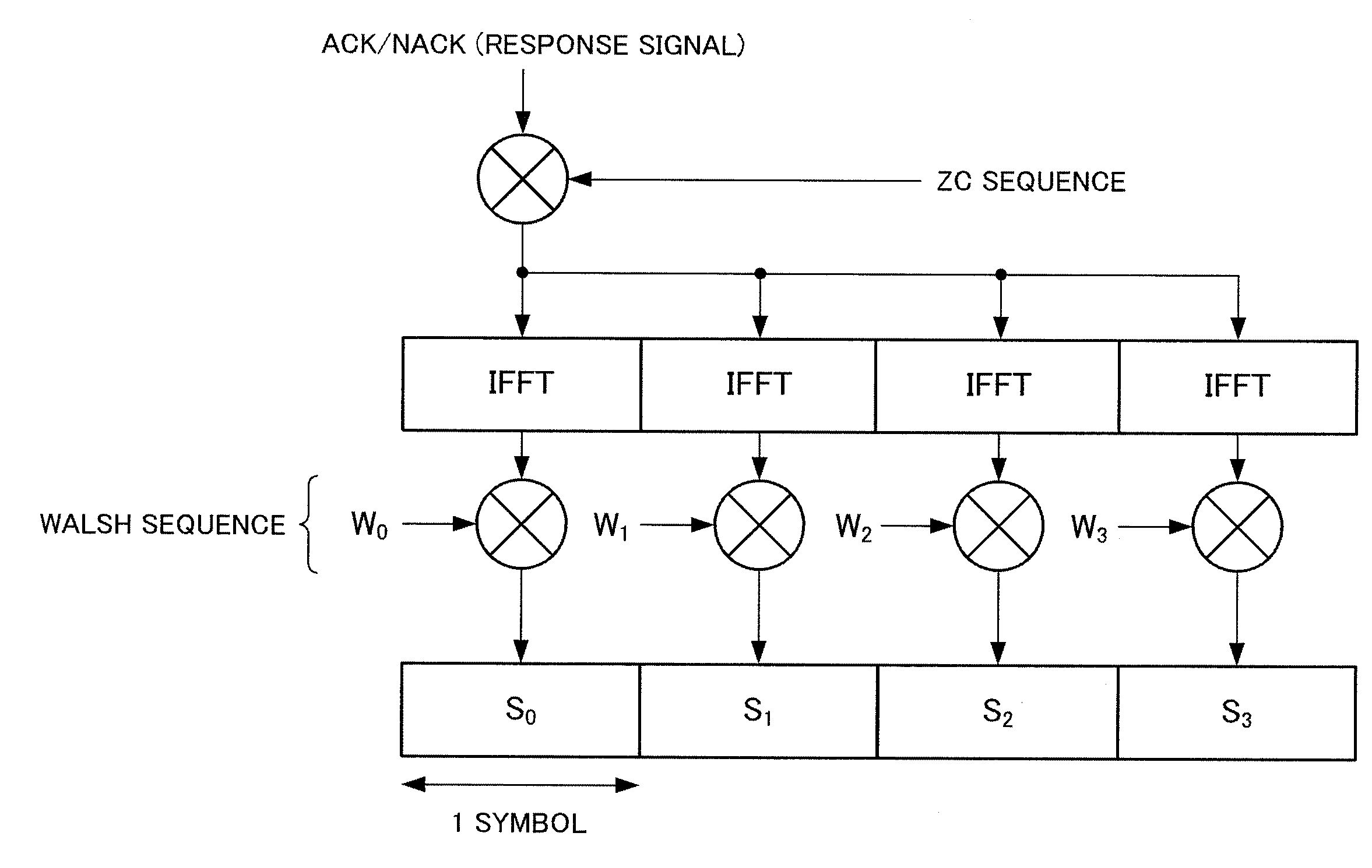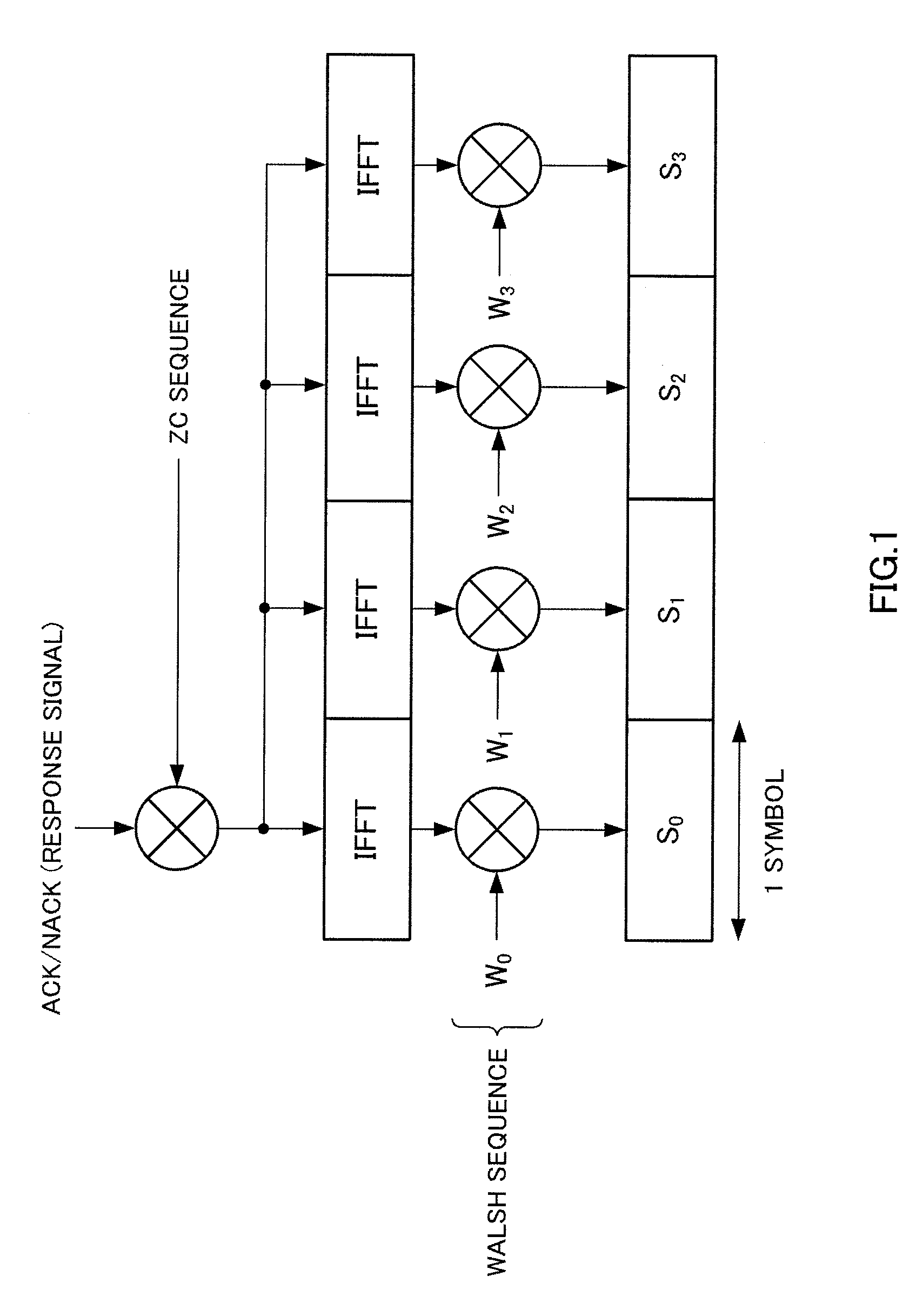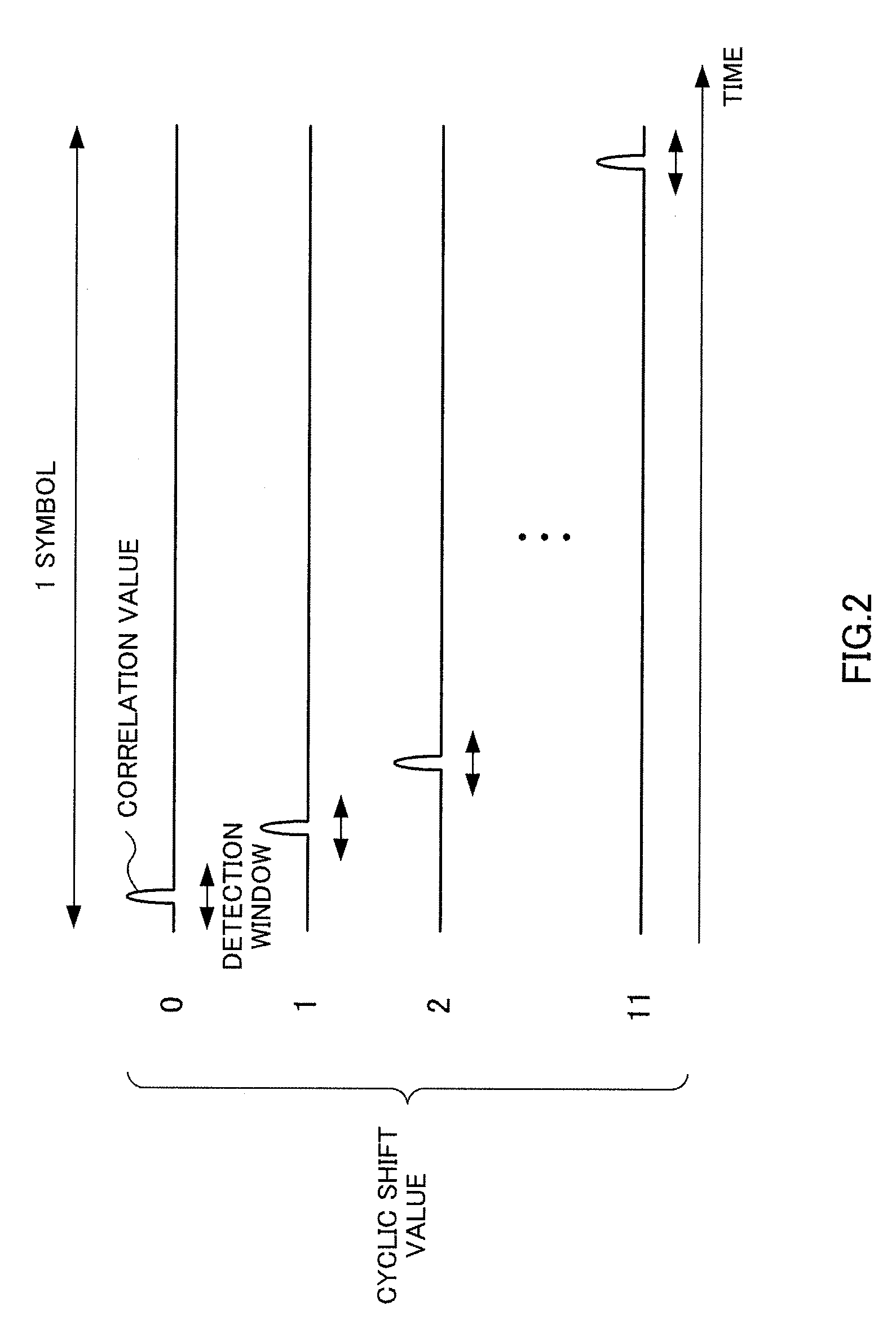Wireless communication apparatus and response signal spreading method
a wireless communication and response signal technology, applied in wireless communication, multiplex communication, orthogonal multiplex, etc., to achieve the effect of reducing the degradation of the separation performance of response signals
- Summary
- Abstract
- Description
- Claims
- Application Information
AI Technical Summary
Benefits of technology
Problems solved by technology
Method used
Image
Examples
embodiment 1
[0030]FIG. 5 illustrates the configuration of base station 100 according to the present embodiment, and FIG. 6 illustrates the configuration of mobile station 200 according to the present embodiment.
[0031]Here, to avoid complicated explanation, FIG. 5 illustrates components associated with transmission of downlink data and components associated with reception of uplink response signals to downlink data, which are closely related to the present invention, and illustration and explanation of the components associated with reception of uplink data will be omitted. Similarly, FIG. 6 illustrates components associated with reception of downlink data and components associated with transmission of uplink response signals to downlink data, which are closely related to the present invention, and illustration and explanation of the components associated with transmission of uplink data will be omitted.
[0032]Also, in the following explanation, a case will be described where ZC sequences are use...
embodiment 2
[0080]As shown in FIG. 11, when W #0 is (1, 1, 1, 1) and W #1 is (1, −1, 1, −1), the first two-chip units in W #0 and W #1 are orthogonal to each other, and the second two-chip units are orthogonal to each other. Similarly, when W #2 is (1, 1, −1, −1) and W #3 is (1, −1, −1, 1), the first two-chip units in W #2 and W #3 are orthogonal to each other, and the second two-chip units are orthogonal to each other. Therefore, if the change of channel condition is sufficiently small during two symbol time periods, inter-code interference do not occur between W #0 and W #1 and inter-code interference do not occur between W #2 and W #3. Therefore, it is possible to separate a plurality of response signals subjected to code-multiplexing by second spreading using W #0 and W #1, into the first two-chip units and the second two-chip units. Similarly, it is possible to separate a plurality of response signals subjected to code multiplexing by second spreading using W #2 and W #3, into the first tw...
embodiment 3
[0087]In code multiplexing by first spreading using ZC sequences, that is, in code multiplexing on the cyclic shift axis, as described above, a sufficient difference is provided between the cyclic shift values of ZC sequences, to an extent that does not cause inter-code interference between the ZC sequences. Therefore, orthogonality between ZC sequences is little likely to collapse. Also, even if there is a mobile station that moves fast, orthogonality between ZC sequences does not collapse. On the other hand, in code-multiplexing by second spreading using Walsh sequences, that is, in code-multiplexing on the Walsh axis, as described above, orthogonality between Walsh sequences is likely to collapse when there is a mobile station that moves fast. Therefore, upon code-multiplexing response signals by second spreading, it may be preferable to increase the average multiplexing level on the cyclic shift axis where orthogonality is little likely to collapse, and decrease the average mult...
PUM
 Login to View More
Login to View More Abstract
Description
Claims
Application Information
 Login to View More
Login to View More - R&D
- Intellectual Property
- Life Sciences
- Materials
- Tech Scout
- Unparalleled Data Quality
- Higher Quality Content
- 60% Fewer Hallucinations
Browse by: Latest US Patents, China's latest patents, Technical Efficacy Thesaurus, Application Domain, Technology Topic, Popular Technical Reports.
© 2025 PatSnap. All rights reserved.Legal|Privacy policy|Modern Slavery Act Transparency Statement|Sitemap|About US| Contact US: help@patsnap.com



